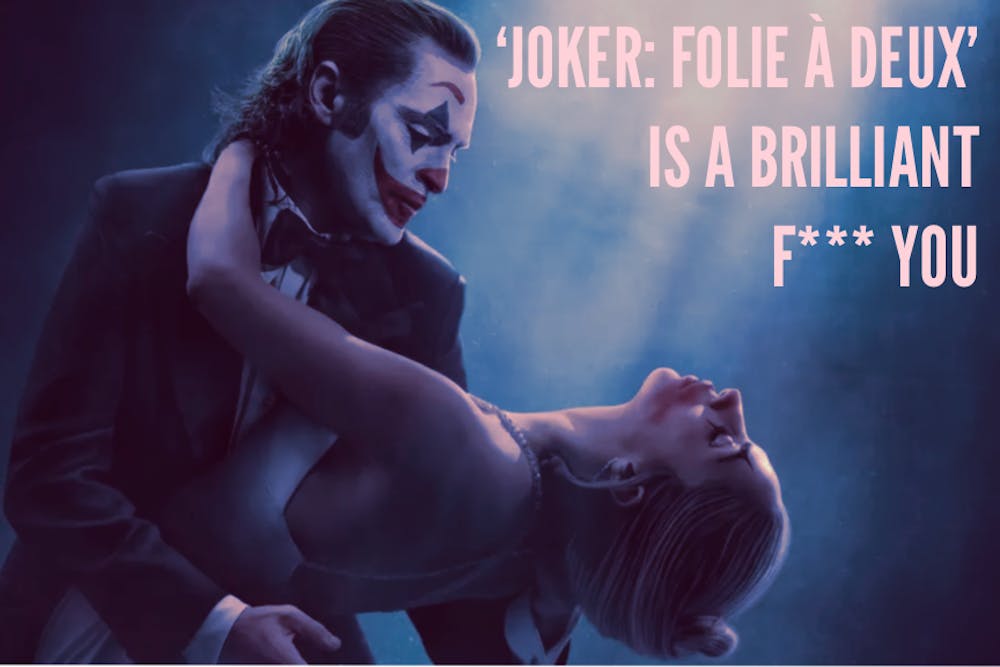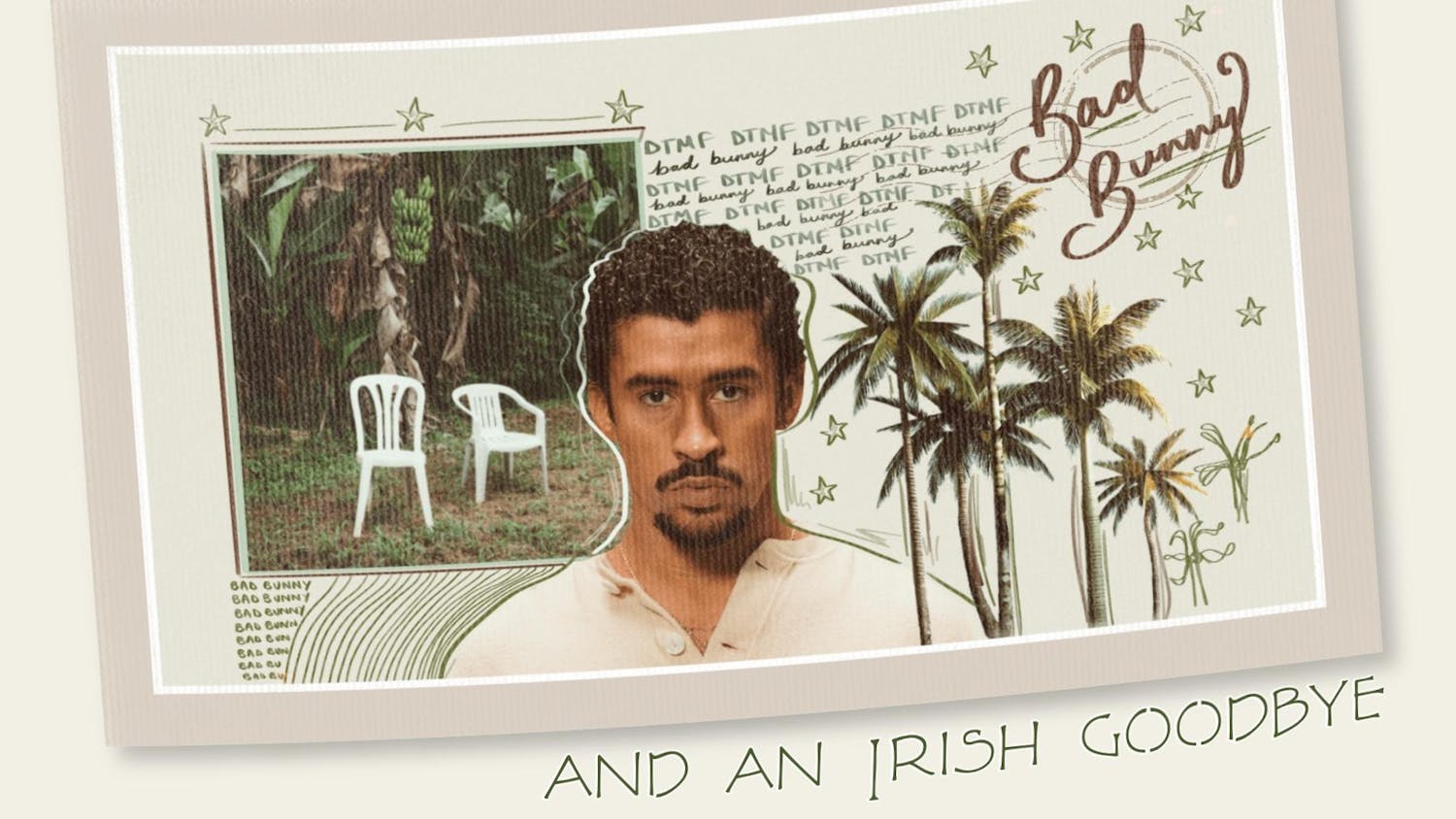“Joker” is a film that broke most people’s brains when it released in 2019. The media labeled the film as dangerous and predicted it would cause mass shootings. Critics found it to be a pompous puddle masquerading as a profound film. And audiences absolutely adored it and helped it become the first R-rated movie to gross over $1 billion at the box office. Between the audience and critical divide, I hold a brave third position: it’s a pretty good film. Cinephiles can smugly complain about the film being a rip-off of “The King of Comedy” all they want; it’s still a powerful character study of a man driven insane by a relentlessly cruel, unempathetic world, anchored by a mesmerizing central performance and superb cinematography.
And now, its sequel, “Joker: Folie à Deux,” finally released this past weekend to a brutal panning that crossed all partisan divides; everyone hates this film. But what if I told you that everyone is wrong? “Joker: Folie à Deux” is one of the most brilliantly provocative films I’ve ever seen. It’s a bold deconstruction of its predecessor and its real-world reception that denies audiences voyeuristic satisfaction and instead challenges them to meaningfully grapple with the circumstances that both created and enabled the Joker.
Taking place two years after the first film, “Joker: Folie à Deux” is essentially a critique of the first film, as the story is all about the fallout from the events of “Joker” and Arthur Fleck (Joaquin Phoenix) heading to trial for the murders he committed. Before his trial, he meets fellow inmate Lee Quinzel (Lady Gaga). Lee is a fantastic take on Harley Quinn; she’s portrayed as a rich upper-west-sider who admitted herself into Arkham Asylum to meet Arthur because she is obsessed with the Joker after seeing a television movie about him (this film is incredibly meta). The Joker and the anarchy he represents is an exotic thrill for her; she has no real connection to the suffering that shaped Arthur, yet she acts like she is fighting the same injustices as him. Lee smartly typifies the phenomenon of activist tourism, and the false love she feeds the woefully lonely Arthur to manipulate him into reigniting the Joker persona for the trial is heartbreaking to watch. Like everyone else in the movie, she vies to define who Arthur is on his behalf, but none genuinely cares about who he is or what’s best for him. Arthur no longer has any control over the Joker; his entire identity has been co-opted by self-serving parties who only see him as a means for their goals. Sound familiar?
Clearly, director Todd Phillips took issue with how some viewers received the first film. Mainly, those who excessively romanticized the Joker's actions and used the movie to appease their murderous resentment towards society. As such, the criticisms of Joker’s fans in the film also feel like thinly veiled jabs toward real-life fans of the first movie. Rarely do you see a franchise hate its own fans so much, but you can’t really fault Todd Phillips for his discontent with the maladjusted individuals “Joker” attracted. Joker is not someone to idolize; he’s just the delusions of a deeply disturbed and traumatized man who needs healing. Yet, in “Joker: Folie à Deux”, Lee and Joker's demagogic fans encourage Arthur to keep the villainous act going and further retreat into the Joker persona instead of taking accountability for what he did. This retreat into fantasy is demonstrated through the film’s many musical sequences, where Arthur can imagine an idyllic world in which he and the Joker are fully integrated into one being and happily in love with Lee. These scenes have proven very controversial due to the widespread bigotry towards musicals, but I loved them. The renditions of popular standards sounded great, the surreal sets looked beautiful and every sequence effectively accentuated the film’s current storybeat.
During the trial, Arthur initially capitulates to Lee and his fans’ desires: he fires his defense attorney, wears the Joker makeup during the trial and resumes his iconic Joker shenanigans. However, he snaps out of it when Gary Puddles, the short-person from the first movie for whom Arthur had a soft spot, takes the stand during the trial. Having been traumatized by Arthur’s murders in the first movie and further mocked by him during the trial, Gary says he feels betrayed by Arthur’s transformation into the vicious Joker because Arthur was the only one who was ever nice to him. Here, Arthur finally realizes that his Joker persona is just as cruel as all those people who hurt him; in other words, he has become what he sought to destroy. What follows is Arthur fully disavowing the Joker, claiming it was never real and taking full responsibility for all the people he murdered. It’s a powerful, subversive moment that feels like a blow to many fans of the first movie, but it really just makes both films all the more compelling of a character study. Here, Arthur fully denounces the sensationalism and idolatry surrounding him and reemphasizes that what he did in the first movie was not the work of a brave rebel but a damaged, delusional man. It doesn’t invalidate the pain felt by Arthur due to a cruel society and broken institutions; instead, the film asserts that the solution to his pain is not to beget more pain that distracts from the actual issues at hand.
“Joker: Folie à Deux” is too challenging and intelligent of a film for those looking for another revenge fantasy similar to the first movie. It’s a relentlessly bleak and sad film, one that fully acknowledges that not only do we live in a society that creates monsters, but also that we live in a society that encourages monsters. I can already see the think-pieces years from now declaring this film to be a misunderstood masterpiece; but let the record show this Scene correspondent understood it right from the start.










